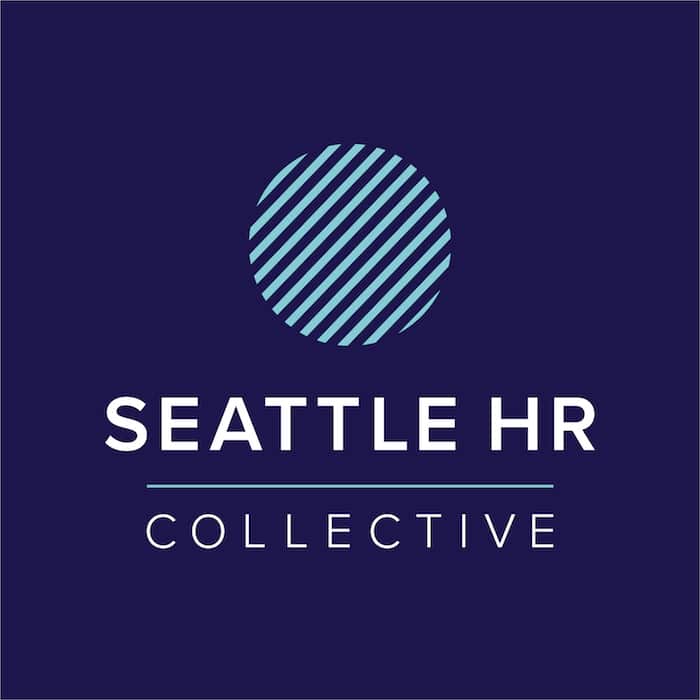On a day somehow simultaneously rainy and not-rainy, dozens of business professionals scaled 23 floors to attend this month’s Seattle HR Collective MeetUp, hosted by augmented writing platform company Textio in their beautiful space. With a bit of office envy, we learned a ton. The topic: how to write job posts that attract diverse and qualified talent. Anyone in the recruiting and recruitment marketing industry can tell you that words matter. What you may not know is that using the right words can cut down the time to fill a role in half just as certainly as using “candidate” or “stakeholder” can send your job ad into limbo. Participants soaked up the data (and advice) from Textio’s Lead Customer Success Engineer, Allie Hall. A linguist by training and self-professed “word nerd”, brought a fresh energy and a seriously powerful blazer to the presentation.
Apart from the wicked shoulderpads, of course, Allie’s power comes from her electric energy, her grasp of data science, and that certain je ne sais quoi of the linguistically talented–a mighty trinity of qualities that seems to describe Textio as a whole. Fueled by millions of existing job ads from companies all over the world, the augmented writing platform uncovers patterns in company word choice that yields new insights as to how to strike a chord with the perfect candidate and cut down the time to fill of your open role. The data is based in real-time and by geography. Allie covered the basic anatomy of a effective job ad and explored the impact of gendered tone and word choice before breaking down what the best job ads can accomplish into three steps: attract, engage, and convince.
Attract: Word Count Counts
The average job seeker spends only 6 seconds reading a job ad, hence each word needs to count. Textio’s engine has determined that the current “hotspot” for total job ad word count is between 300-700 words, which sounds like a rather large range before you take into account the differences in responsibility and temperament that defines jobs against each other. An in-demand DevOps Engineer isn’t going to even read all of a 400 word message, let alone a 700 word message. But if you flip that on its head, an aspiring Copywriter might be turned off by any attempt to attract them that doesn’t include at least 5 obscure GRE-level words and a minimum of bullet points. The range exists for a reason, but it’s safe to say that the TLDNR (Too Long Did Not Read) effect persists today and may even be increasing in severity. Textio reports that around 13 words per line is the current ideal, but even that sentence length is decreasing.
Engage: Personalize Your Message to What’s In It for Your Target Candidate
But how do you engage candidates if you have to address a shortening attention span and high volumes of competing job offers? Turn your back on cookie-cutter templates and create a message that speaks to who you’re after. This is where targeted language comes into play, the tone of a single word can impact a job seeker in a profound way, enough to snatch their interest. Engagement comes in many forms, but right now the most effective job ads address what the candidates are really interested in. Will they be able to learn and expand their skill set at this job and be supported through the learning curve? Will they feel comfortable enough in their cultural environment to actually have a good time at a work-sponsored Happy Hour? Will they be challenged, will they be able to grow into the person they envision themselves becoming? These are the things job seekers are looking for, underscoring that in today’s professional climate, culture and professional development is weighted more than compensation packages alone.
Convince:
So, let’s say you’ve managed to attract a job seeker past those vital 6 seconds, and have engaged them with your messaging to the point where they can begin to imagine themselves working at your company. To seal the deal you must convince them to reach out and begin an interaction. It’s important to describe the role (the challenges and day-to-day tasks) but equally important is describing how one will feel working there. Will they be bored and content, or happily challenged? Will they balk at small talk in the office kitchen, or will they seek it out? Financial compensation alone is no longer enough to attract the best candidates — culture fit and supported growth opportunities are consistently tipping the priority scale. To match this, write your job ads with more emphasis on growth language, such as “learning new things”, “motivated to create”, and “developing important skills”. The best job post advertises growth mindset — the ability to learn and grow instead of the pre-existing condition of brilliance. Try to avoid fixed language such as “best and brightest”, or “genius” that assumes existing excellence and instead offer up an opportunity to become the best and brightest.
Attract, engage, convince. The best job ads do this. So do the best lawyers, politicians, and salespeople. For some, this sort of linguistic consideration comes naturally, and it’s from these sorts of people that Textio’s augmented writing platform was born. Playing to growth mindset, culture fit, and a whole person approach to work-life balance has been proven (by Textio) to cut down on time-to-fill and create a better relationship with the job seeker from the start and attract a great and diverse candidate base. By framing language so as to support growth, to facilitate the process of becoming the genius instead of having to be one in the first place, a potential candidate in today’s climate can feel like their needs and dreams are not only being considered but attended to. These findings are backed up by the company’s massive data sets and are even further determined by timing and geography. And because the data results are different by location and time, what works now may not be true 6 months from now or what works on the east coast may not apply on the west coast. Textio provides feedback based on real-time data and location. Write a job description and Textio will score it and suggest changes.
As word-nerds ourselves, it’s mind-blowing to have data to guide and inform us on words to use that shorten the fill time — to know which words will help you get the job done. Candidate outreach is marketing and good recruitment marketing is increasingly key to bringing in the best talent. Sometimes the word choices we make may not be intuitive — why go by gut when mass amounts of data can give you information on what’s working now. Of course, everyone’s mind raced to what other applications of word use these data sets could be used for. Textio’s breakthrough usage is one powerful example. Who knows what’s to come. For us word nerds and recruitment marketers, it’s incredibly exciting.














